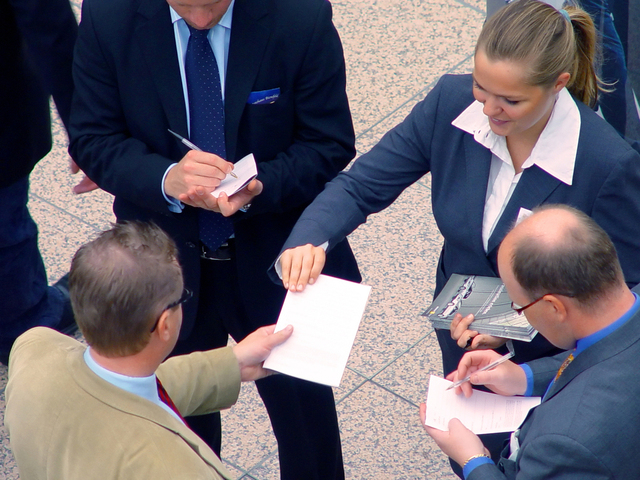Questions? (800) 560-2242

Avoiding Common Networking No-Nos

Avoiding Common Networking No-Nos from ABE-Online.com -
Networking with other business professionals can be an effective way to increase your visibility in your marketplace, introduce your products to new customers, or even lead to a new job. Many people, however, think of networking as a one-time thing, failing to understand how professional relationships through networking can benefit them in the long term.
A 2014 survey of senior managers by OfficeTeam identified the top networking mistakes professionals make such as:
. Failing to stay in touch with contacts (27 percent).
. Burning bridges with past employers (21 percent).
. Not asking for help when needed (20 percent).
. Not helping others when they need it (14 percent).
. Not thanking people for their help (14 percent).
Here are several ways to network more effectively:
Be ready: Networking opportunities can come in unexpected places, such as a hallway or an elevator. Always be ready to talk to new contacts, and have your business cards handy.
Be flexible: When contacting a stranger in order to network, do not specify a time and a venue for a meeting right away. Instead, ask them if they would willing and able to meet some time at their convenience. If your request is regarding your job search, do not bring your resume without asking permission to do so. Networking should be mutually beneficial for the participants, not one-sided.
Do not press for introductions: A new contact is already giving his or her time and attention. Do not ask for introductions unless the contact has already offered to do so. You can however, open the topic by offering to introduce new contacts to your colleagues. Only connect the new contact to your colleagues if you have their permission to do so.
Pay for lunch or coffee: If you are the one who made the overture, you are obligated to pay for the meal.
Follow up immediately: Contact people immediately after meeting them at an event while the connection is still new and fresh. Respond promptly to any requests they may have in order to build goodwill.
Continually keep in touch: Once you have established a relationship with someone, find out if the new contact wants to keep in touch. Check in with the person now and then to see how they are doing. Provide updates on changes in your professional life. Demonstrate a desire to help others by sending them interesting news articles or sharing professional opportunities.
Make reasonable requests: When asking for help, clarify what you need and do not make extreme demands. Expect that some people may not have the time or resources to help you.
Express gratitude: Show your appreciation to the contacts who help you and always look for opportunities to return the favor.
The OfficeTeam research also stated that networking online was the most effective way to connect with other professionals, with meeting for coffee or lunch running a close second. Other effective networking methods include participating in professional associations, attending networking events, or doing personal interest activities such as hobbies and sports.
Many networking no-nos can be avoided when you build on meaningful and mutually beneficial relationships with new contacts. Remember to recognize their needs and limitations, keep in touch, help them when you can, and be grateful when they help you.
Categories
Recent Posts
- Shredder Security Levels explained
- What Is A Shredder Used For In An Office?
- Which Is The Best Paper Shredder For A Small Office?
- PacMaster Cardboard Shredder / Packing Material Machine
- When is buying 2 commercial shredders cheaper than buying one?
- What are the rights of a business in the charge back process?
- Check signing software versus a check signing machine.
- How to choose the right check signing machine or software?
- How loud are paper shredders?
- Now is the time automate and secure your Accounts Payable process.
About
Advantage Business Equipment posts information to help businesses:
- Automate accounts payable procedures.
- Set up secure check signing software or machines.
- Research finding the correct shredder for offices or commercial businesses.
- Find the best 3D printer for businesses and schools.
- Finding the appropriate paper handling equipment for churches, mail rooms, and print shops.
- Build or find the right hard drive degausser, hard drive punch or shredder to protect confidential electronic data.
© Copyright 2025 Advantage Business Equipment. All rights reserved.